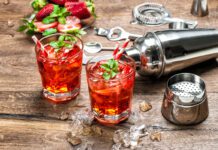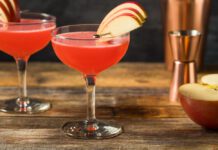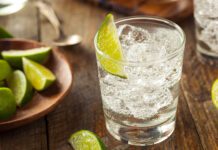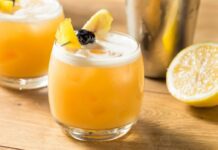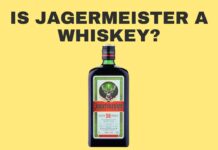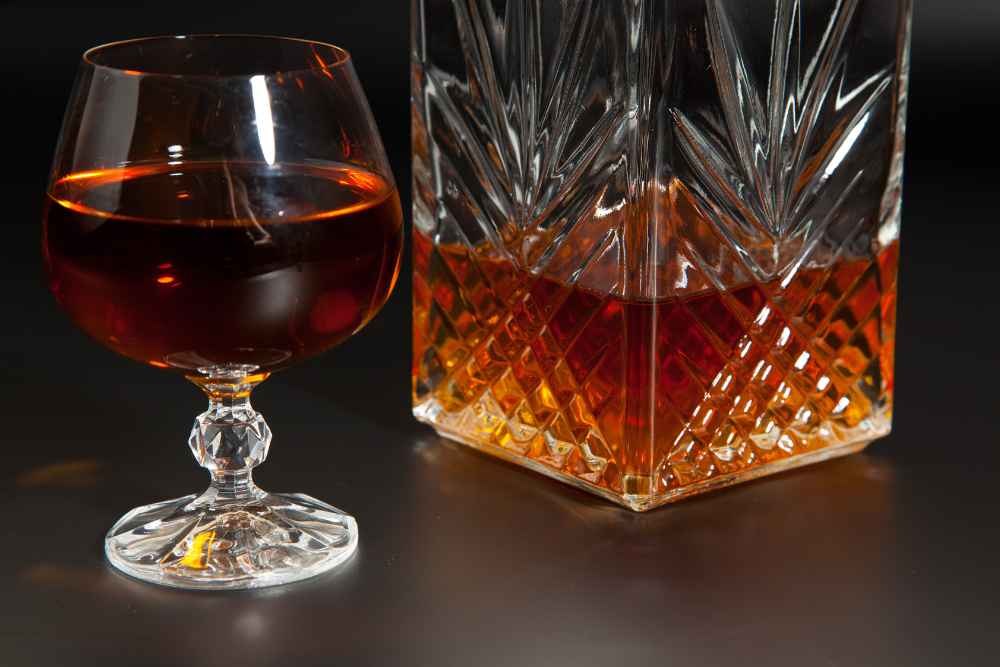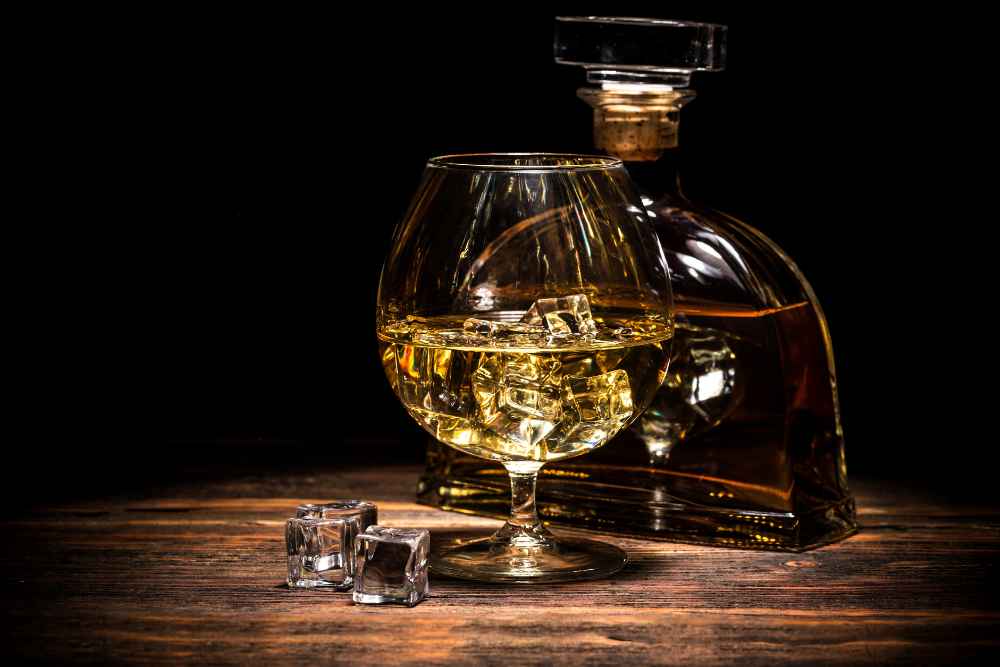This page may contain affiliate links. Please see our Disclaimer for more information. Always drink responsibly and adhere to your local legal drinking age.
Introduction
Welcome to the world of Cognac, a luxurious and sophisticated spirit with a rich history that dates back to the 1600s. This premium brandy hails from the Cognac region in southwest France, where unique soil conditions and strict production guidelines work together to create unparalleled beverage connoisseurs enjoy worldwide.
In this comprehensive guide, we’ll explore everything you need to know about this fascinating French delight: its origins, characteristics, and classifications, as well as some tips on tasting and pairing it with your favorite dishes.
Key Takeaways:
- Cognac is a premium wine grape brandy that is only produced in the Cognac region of southwest France under strict guidelines and regulations.
- The soil and terroir of the Cognac region play a significant role in shaping the taste and quality of cognac. For example, the clay-limestone soil in the Grande Champagne sub-region produces grapes that are high in acidity and minerality, resulting in a more delicate and floral flavor profile.
- Cognacs are classified based on their age; VS (Very Special), aged for at least two years; VSOP (Very Superior Old Pale), aged for at least four years; XO (Extra Old), which requires a minimum aging period of ten years. Moreover, Hors d’age describes very old prestigious cognacs surpassing even XO classification’s aging requirements.
What Is Cognac?
Cognac is a premium wine grape brandy that is only produced in the Cognac region of southwest France under strict guidelines and regulations.
Definition And Characteristics
Cognac, a renowned type of brandy, originates from the Charente and Charente-Maritime départements in France. This exquisite spirit is named after the town of Cognac, located within the region.
The defining characteristics of cognac stem from its double distillation process and aging in oak barrels for at least two years. The result is a smooth, amber-hued drink with complex flavors ranging from fruity to spicy notes depending on its age and specific blend.
To fully appreciate this elegant spirit often found in classic cocktail recipes such as Sidecars and French 75s, understanding its origins, production methods, and classifications is essential.
Classifications
Cognac is classified primarily based on age, and each classification helps cocktail drinkers understand this exquisite spirit’s flavor profile, complexity, and quality.
The most common categories include VS (Very Special), aged for a minimum of two years in French oak barrels; VSOP (Very Superior Old Pale), aged for at least four years; and XO (Extra Old), which requires a minimum aging period of ten years.
Interestingly, the term ‘Hors d’age’ is often used to describe very old, prestigious Cognacs not adhering to standard classifications – these generally surpass even the XO category’s age requirements.
For instance, you might encounter Rémy Martin’s Louis XIII or Hennessy’s Paradis Imperial among these ultra-premium offerings.
History And Significance
The rich history of cognac dates back to the 17th century when wines from the Charente region in France were distilled to improve their shelf life and make them more suitable for shipping to far-off ports.
The Dutch, who used French wine as ship ballast, found that distilling it into a spirit called “brandewijn” allowed it to last longer while preserving its flavor.
Cognac gained prominence on the world stage due to its unique taste and quality attributed to the region’s terroir – a combination of soil composition and climate conditions necessary for growing exceptional grapes.
With strict regulations surrounding cognac production set by Bureau National Interprofessionnel du Cognac (BNIC), only spirits distilled twice in copper pot stills within designated areas can be labeled as true cognacs.
Throughout centuries of evolving production methods and changing market demands, what has remained constant is that Cognac continues to be synonymous with luxury and refinement.
Cocktail lovers worldwide appreciate cognacs aged for at least two years in French oak barrels as they add depth and complexity unrivaled by other types of brandy made anywhere else in the world.
The Cognac Region: Geography And Climate
The Cognac region is located in southwest France, along the Charente River, and near the Atlantic Ocean.
Location And Boundaries
The Cognac region is in western France, specifically in the Charente department within the Nouvelle-Aquitaine region. The town of Cognac gives its name to this picturesque area that spans over 2,600 square miles and includes vineyards producing cognac for centuries.
The boundaries of the Cognac region are strictly defined by law and include six sub-regions known as crus. These cru regions are Grande Champagne, Petite Champagne, Borderies, Fins Bois, Bons Bois, and Bois Ordinaires.
Each cru has a unique terroir with variations in soil type and climate, contributing to different flavor profiles of the grapes grown there.
Soil And Terroir
The soil and terroir of the Cognac region play a significant role in shaping the taste and quality of cognac. For example, the clay-limestone soil in the Grande Champagne sub-region produces grapes that are high in acidity and minerality, resulting in a more delicate and floral flavor profile.
In contrast, the sandy soils of Bons Bois produce grapes that are richer in fruit flavors, like apricot and peach. The diversity of soil types across the region allows cognac producers to create unique blends with distinct characteristics.
Factors like temperature fluctuations and humidity levels also contribute to the aging process inside oak casks, imparting additional flavors into the spirit over time.
Climate And Weather
The climate in the Cognac region plays a significant role in producing this excellent brandy. The mild maritime climate makes it conducive for grape cultivation since the area experiences relatively consistent weather patterns throughout the year.
The Cognac region gets an average annual rainfall of about 800mm, which supports healthy vine growth during spring and summer.
However, recent climate changes have dramatically affected cognac production by increasing temperatures that reduce grape acidity levels. This means growers must adapt their viticulture practices to cope with global warming while maintaining consistent quality cognacs.
Grapes Used In Cognac Production
Cognac is made from three main grape varieties – Ugni Blanc, Folle Blanche, and Colombard.
Ugni Blanc, Folle Blanche, And Colombard
Ugni Blanc, Folle Blanche, and Colombard are the three main grape varieties used in the production of Cognac. The Ugni Blanc grape is the most dominant variety used for Cognac making and accounts for 98% of all vines planted in the region.
This grape has high acidity levels and low sugar content, making it perfect for distillation. It produces a neutral wine that can be easily transformed into Cognac through double distillation.
The Folle Blanche is another classic grape variety traditionally used in Cognac production before phylloxera infestation nearly wiped out vineyards across Europe in the 19th century.
It is not widely grown today but still finds use among small producers who value its delicate aroma and freshness.
In summary, these three primary types of grapes all play essential roles in shaping different aspects of Cognac quality, such as flavor profile, aging potential, or balance between fruity notes and oak-derived aromas characteristics essential to achieving distinctiveness among different brands – whether you’re savoring your sip neat or using this iconic spirit as a base ingredient to create cocktails that pack a punch!
Grape Growing Regions
The Cognac region is divided into six different growing regions, known as “crus,” that vary in soil composition, climate, and grape varietals. The crus are Grande Champagne, Petite Champagne, Borderies, Fins Bois, Bons Bois, and Bois Ordinaires.
The Grande Champagne region is considered the best for producing high-quality cognacs due to its chalky soils, which allow for good moisture drainage while retaining enough nutrients to support healthy vine growth.
Similarly, Petite Champagne produces excellent cognacs due to its similar soils but slightly less chalk content. Other crus, such as Borderies and Fins Bois have distinct characteristics that make their cognacs unique in flavor and aroma.
Vineyard Management And Harvesting
The process of making cognac starts with the careful management and harvesting of grapes. The vines are grown in six specific regions within the Cognac region, each known for its distinctive terroir and flavor profile.
Vineyard management involves various tasks such as pruning, fertilizing, and pest control to ensure a healthy crop. Grapes used in cognac production are typically harvested by hand rather than machine to avoid damaging them, ensuring that only the best fruit is selected for distillation.
Harvest timing is critical since cognac relies on high acidity levels in the grapes to create its signature taste.
Keywords: vineyard, grapes used in cognac production, harvesting crops
The Production Process Of Cognac
Producers ferment and distill the grapes using a special type called a pot still, which concentrates the alcohol content.
Fermentation And Distillation
During fermentation and distillation, the grape juice is converted into wine and then distilled to produce eau-de-vie, which is later aged to make Cognac. Here are some important facts about this stage:
- The grapes used for Cognac production are picked by hand and pressed to extract the juice.
- Yeast is added to the grape juice to start fermentation, which converts sugar into alcohol.
- The resulting wine is low in alcohol content (around 9-10%) compared to regular wine (12-14%).
- The wine is then double-distilled in copper stills called alembics, separating the alcohol from the water based on their boiling points. This results in a clear, colorless liquid with an alcohol content of around 70% ABV.
- The second distillation happens in smaller still called “chauffe de brouillis.”
- The final distillation product is called eau-de-vie (“water of life”), which will be aged in oak barrels to become Cognac.
- By French law, only eau-de-vie produced from a specific set of grapes grown in designated regions within France can be labeled as Cognac.
Understanding the fermentation and distillation process is crucial in appreciating the complex flavors and aromas of a glass of fine Cognac.
Aging And Maturation
Aging and maturation is an essential processes in producing cognac. Here are some important facts about it:
- Cognac is aged in oak barrels for at least two years, although some can be aged for decades.
- The aging process of cognac takes place in oak barrels over many years, with an important moment in the aging of cognac between five and eight years.
- During the aging process, the eau-de-vie absorbs compounds from the wood, giving it its color, aroma, and flavor.
- Oak barrels used for aging cognac are typically made from French oak sourced from one of several forests, including Limousin and Tronçais.
- The interaction between the wood and the eau-de-vie during aging creates a complex array of flavors, including vanilla, spice, fruit, and caramel notes.
- Cognac matures in the same way as whiskies and wines barrel-age. However, where whiskies take on smoky or peaty notes from their barley base malts and wines develop tannins from their grape skins, cognacs rely on oak tannins to acquire complexity.
- The age label on a bottle of cognac must reflect the youngest brandy used to create it. For example, if a blend includes an eau-de-vie that has been aged for 10 years and another that has been aged for only two years, the expression will be labeled as VS (Very Special) because this indicates that two-year-old eaux-de-vie were also used.
- Some of the finest examples of cognacs are produced using grapes grown exclusively within a single vineyard or estate. Known as “single estate” or “single terroir” cognacs, these expressions offer unique flavor profiles due to their exclusive use of specific grape varietals grown and harvested within a given plot of land.
Blending And Bottling
Blending and bottling are crucial in the cognac production process, ensuring consistent quality and flavor profiles in each bottle. Here’s what you need to know:
- Cognac houses combine eaux-de-vie (un-aged brandy) from different vintages and crus (growing regions) to create their unique blends.
- Blending allows producers to balance out any imperfections, enhance certain flavors, and achieve a desired taste profile.
- The cellar master is responsible for selecting and blending the eaux-de-vie, often using personal expertise and sensory evaluations.
- Once blended, the cognac matures in oak casks until it reaches the desired age category (e.g. VS, XO).
- After maturation, the cognac is ready for bottling. Cognac producers must follow strict regulations set by the Bureau National Interprofessionnel du Cognac (BNIC) regarding labeling and aging standards.
- Each bottle of cognac must be labeled with an age statement that reflects the youngest eau-de-vie used in the blend – even if some of the spirits are much older.
- Some high-end producers offer single estate or vintage cognacs that aren’t blended at all – instead showcasing the unique qualities of a specific vineyard or crop year.
By understanding how blending and bottling play into creating a quality bottle of cognac, cocktail drinkers can better appreciate this beloved spirit.
Types Of Cognac
“Cognac comes in different age categories and labels, with popular brands like Hennessy, Martell, and Remy Martin offering blended and single estate cognacs.”
Age Categories And Labels
Cognac is classified based on the minimum age of the eau de vie blends, which defines their complexity and depth. The four categories of cognacs are VS (Very Special), VSOP (Very Superior Old Pale), XO (Extra Old), and Hors d’Age or Age Inconnu (beyond age).
A bottle labeled as VS or Three Star contains at least two years old cognac, while a VSOP requires at least four years of aging. XO indicates that the youngest blend in the bottle has aged for ten years or more, while Hors d’Age suggests an even longer maturation process exceeding 30 years.
Popular Cognac Brands
Some of the most famous Cognac brands include Hennessy, Rémy Martin, and Martell. These three brands are known for their high-quality and consistent production of Cognac.
Hennessy is the largest distiller of Cognac in the world, with a long history dating back to 1765. They produce various Cognacs, from their VS (Very Special) to their XO (Extra Old).
Rémy Martin is another well-known brand that has been producing Cognac since 1724. Their flagship product is the Rémy Martin VSOP (Very Superior Old Pale), a smooth and complex blend aged for at least four years in French oak barrels.
Martell also has a rich history, dating back to 1715 when Jean Martell founded his distillery in Cognac. Their signature blend is the Martell Cordon Bleu, awarded numerous accolades for its exceptional taste and quality.
Blended And Single Estate Cognacs
Blended cognacs combine brandies from different estates within the Cognac region. This allows for consistency in flavor and quality and the ability to create unique combinations of flavors and aromas.
Blended cognacs often bear age categories such as VS (Very Special), VSOP (Very Superior Old Pale), or XO (Extra Old) on their labels, indicating a minimum length of aging.
On the other hand, single-estate cognacs are produced exclusively from grapes grown within a specific estate in the Cognac region. This type of cognac showcases the unique characteristics and terroir of each estate’s grapes.
Single estate cognacs may also carry a vintage year on their labels if made from grapes harvested in a particular year.
Both types offer distinct experiences when it comes to flavors and aromas – whether you prefer consistency or uniqueness – so it’s worth trying both to find your preferred style of this beloved French spirit!
Cognac Tasting Tips And Techniques
Please select the appropriate glassware for your cognac, which should have a tulip shape to concentrate the aromas and allow you to swirl it without spilling; warm up the cognac glass in your hand before pouring; take several sniffs of the fragrance before taking a small sip; let it coat your mouth and savor the complexity of flavors, including fruit, spices, wood, and leather notes.
Glassware Selection And Temperature
Choosing the proper glassware is key to enjoying cognac. A tulip-shaped glass with a wide rim and narrow base is ideal for nosing, allowing you to appreciate the spirit’s aroma fully.
Regarding temperature, serving cognac too hot can mask its nuances, while serving it too cold may dull its flavors. The ideal temperature for tasting cognac is 18-20°C (64-68°F).
To achieve this, let your glass sit in your hand for a few moments before siping. Avoid heating your cognac, as it may destroy the delicate flavors from years of barrel aging.
Nose And Palate
When tasting Cognac, your nose and palate are crucial in experiencing the full flavor profile. Start by holding the glass at an angle and gently sniffing to capture the initial aroma.
Then swirl the glass to release more of the scent and inhale again, this time with deeper breaths.
Next, take a small sip and let it settle on your tongue for a few seconds before swallowing. Pay attention to how it feels in your mouth – is it smooth? Oily? Acidic? As you swallow, breathe in through your nose to capture any additional flavors that linger after you’ve swallowed.
Remember that everyone experiences taste differently! Don’t be afraid to experiment with different foods when pairing cognac – some people find that spicy foods highlight certain flavors, while others prefer sweeter pairings like chocolate or berries.
Food Pairings
Cognac is a versatile drink that pairs well with various types of food. Here are some examples:
- Cheese – Aged Gouda, blue cheese, and cheddar all pair well with cognac.
- Meat – Beef, lamb, and duck are great options to pair with cognac.
- Seafood – Shellfish like lobster and crab can stand up to the intensity of cognac.
- Desserts – Chocolate desserts like truffles and cakes complement the sweet notes in cognac.
- Cigars – Cognac is often paired with cigars due to their rich flavors that don’t overpower one another.
- Figs – The sweetness of figs works well with the fruity flavors in cognac.
- Candied fruits – Candied orange or ginger can be used as a garnish for a cocktail made with cognac.
Pairing cognac with food can enhance its flavor profile and bring out new dimensions in the drink and dish. Additionally, certain food pairings can help reduce the burn of alcohol in cognac, making it more enjoyable for those who may not typically gravitate towards strong drinks.
Cognac Cocktails And Mixology
Mixologists and cocktail enthusiasts can get creative with cognac by incorporating it into classic cocktails like the Sidecar or as a substitute for whiskey in an Old Fashioned.
Classic And Modern Recipes
Cognac is a versatile spirit that can be enjoyed neat or mixed in cocktails. Here are some classic and modern recipes to try:
- Sidecar – a classic cocktail made with cognac, triple sec, and lemon juice
- French 75 – a refreshing drink made with gin, lemon juice, and simple syrup and topped off with cognac
- Cognac Old Fashioned – a twist on the classic whiskey version using sugar, bitters, and a splash of club soda to muddle with cognac instead
- The Summit – mix Rémy Martin VSOP with elderflower liqueur and Champagne for an elegant cocktail.
- Hot Toddy is perfect for cold weather; mix hot water with honey and lemon, then add cognac for a comforting sip.
- Champs-Elysées – an herbaceous concoction featuring green Chartreuse, lemon juice, simple syrup, and cognac
- Cognac Sour – add egg white to the classic sour recipe of lemon juice and simple syrup for added texture and flavor.
- Velvet Threesome – get creative by blending cognac with raspberry and coffee liqueur for an indulgent dessert-like cocktail.
With so many options available, there’s no wrong way to enjoy cognac in your cocktails! Don’t be afraid to experiment with different flavors and ingredients to find your perfect combination.
Mixology Techniques
Mixology techniques can elevate the flavor and aroma of cognac in cocktails. Here are some tips for creating delicious cognac-based drinks:
- Stir, don’t shake: Shaking can dilute the flavors and aromas of cognac, so it’s best to stir it with ice instead.
- Choose the proper glassware: A snifter or a tulip-shaped glass is best for sipping cognac, while a highball or rocks glass works well for cognac cocktails.
- Experiment with different ingredients: Cognac pairs well with fruity, citrusy, and nutty flavors, so try incorporating fresh juices, bitters, liqueurs, and garnishes like herbs or spices into your cocktail recipes.
- Use quality ingredients: Since cognac is a premium spirit, it’s important to use top-quality mixers and garnishes to enhance flavor.
- Balance the sweetness: Cognacs vary in sweetness levels depending on their age category and blend, so be sure to adjust the amount of sugar or syrup in your cocktails accordingly.
- Don’t overdo it with ice: While ice is necessary for chilling and diluting the drink slightly, too much ice can water down the cognac flavors.
By following these mixology techniques, you can create unique and delicious cocktails that highlight the complex notes of this beloved French brandy.
Cognac Tourism And Cultural Attractions
Visiting the vineyards and distilleries of the Cognac region is a must for any spirits lover, and there are plenty of unique cultural attractions to explore – from historical landmarks to local gastronomy.
Visiting Vineyards And Distilleries
A trip to the Cognac region wouldn’t be complete without visiting vineyards and distilleries. This is a chance to witness firsthand how cognac, one of the world’s most revered spirits, is made.
Visitors can explore some of the oldest estates and learn about the history, production process, grape varietals used to make cognac and more. While there are several producers to choose from (like Rémy Martin or Hennessy), boutique distilleries offer unique experiences that might not otherwise be available.
Cognac Festivals And Events
Suppose you’re a cocktail drinker and planning to visit the Cognac region. In that case, you’re in luck because there are plenty of cultural events and festivals related to the region’s famous eau-de-vie and liqueurs. Here are some must-see events:
- The Cognac Festival: This festival highlights the drink and its cultural significance. It’s a three-day event every year in July, with tastings, exhibitions, music, and fireworks.
- Les Gastronomades: This food festival features chefs from across France who come together to showcase their culinary skills using local produce and ingredients. It takes place every November in Angouleme.
- Blues Passion Festival: One of the biggest music festivals in the region, Blues Passion takes place every June and features an impressive lineup of international musicians performing blues, jazz, rock, and soul.
- Pineauteau Distillery Open Day: Pineauteau is a family-run distillery that produces cognac using traditional methods. During their open day in October, visitors can tour the distillery and learn about the production process.
- Heritage Days: Held annually on the third weekend of September across France, Heritage Days offer free access to monuments and heritage sites usually closed to the public. Cognac includes tours of historic buildings like Maison de la Lieutenance and Château de Cognac.
With so many events happening throughout the year, there’s always something to do in Cognac besides sipping on delicious cocktails made with local spirits. Plus, there are plenty of opportunities to learn about local gastronomic specialties while enjoying great music or visiting historic sites – making for an unforgettable experience for any cocktail lover!
Cultural Landmarks And Gastronomy
The Cognac region is famous for its prestigious brandy, rich cultural heritage, and gastronomy. The town of Cognac, which gives the drink its name, is home to an array of historical landmarks, such as the Chateau des Valois and Saint-Léger Church.
In addition, food lovers can indulge in traditional French cuisine paired with a glass of cognac at local restaurants like Le Coq d’Or or La Ribaudière.
From oysters to goat cheese from Poitou-Charentes, the culinary traditions in this region are deeply rooted in history and have been celebrated for centuries.
Environmental And Community Initiatives In The Cognac Region
Cognac producers in the region are committed to sustainable vineyard practices and community support, ensuring a bright future for the product and its surroundings.
Sustainable Vineyard Practices
Cognac producers have been taking steps to ensure the sustainability of their vineyards for many years. Some of the practices include promoting biodiversity among crops, reducing water and energy usage, and using natural pest control methods.
For instance, Martell has implemented a Forest Conservation program to protect 170 hectares of forest in Cognac by planting trees and supporting research on sustainable forestry.
In Champagne and Cognac regions, nearly 40% and 15%, respectively, of vineyards have embarked on ecological initiatives to support sustainable conviviality goals.
Community Support And Engagement
The Cognac region isn’t just about producing world-class spirits. It’s also a community of people devoted to supporting and engaging with each other.
Through its Bureau National Interprofessionnel du Cognac (BNIC), the Cognac industry engages in outreach programs that support education and development through various activities such as scholarships for young talents, funding research grants for innovative projects that address environmental concerns or technological advancements in distillation processes that will improve yields without compromising quality.
Many small producers work together to sustainably grow their grapes while supporting local winegrowers, artisans, and communities around them.
Future Of Cognac And The Region
The Cognac industry continues to grow and evolve, with innovations and trends shaping the future of this iconic spirit. One key area of focus is sustainability, with a growing number of producers committed to environmentally friendly practices such as organic farming and renewable energy.
In addition to these developments, the Cognac region remains a significant draw for visitors worldwide. Its unique combination of history, culture, and natural beauty offers endless possibilities for exploration and discovery.
Whether you’re interested in visiting vineyards and distilleries or exploring local landmarks like the town of Cognac, there’s something here for everyone.
FAQ
Q: What is cognac?
A: Cognac is a type of brandy that is made from white grapes. It is a distilled spirit aged in oak barrels for at least two years.
Q: Where is cognac made?
A: Cognac can only be made in the Cognac region of France, located in the country’s southwest.
Q: What makes cognac different from other types of brandy?
A: Cognac is different from other types of brandy because it can only be made in the Cognac region of France and is aged for a minimum of two years in oak barrels. Additionally, cognac is made from specific types of white grapes and must be distilled twice.
Q: What is the history of cognac?
A: Cognac has been produced in the Cognac region of France for hundreds of years. It was first distilled in the 16th century and became popular among French aristocrats in the 18th century.
Q: How is cognac aged?
A: Cognac is aged in oak barrels for at least two years. Some cognacs are aged for much longer, with the highest quality cognacs being aged for several decades.
Q: What types of grapes are used to make cognac?
A: Only specific white grapes can be used to make cognac. The most commonly used varieties are Folignan, Colombard, and Ugni Blanc.
Q: How is cognac produced?
A: Cognac is produced by distilling white wine into a spirit and aging it in oak barrels. The spirit is then blended to create a specific flavor profile.
Q: What is the appellation of origin for cognac?
A: The appellation of origin for cognac is the Cognac region of France. The spirit must be produced in this region to be labeled as cognac.
Q: Can cognac be made anywhere in the world?
A: No, cognac can only be made in the Cognac region of France. While brandy can be made anywhere, only brandy produced in this region can be labeled as cognac.
Q: How should I drink cognac?
A: Cognac can be enjoyed on its own, or it can be used in cocktails. It is typically served in a snifter glass and should be sipped slowly to savor its complex flavors.
Q: What are the different types of cognac?
A: Cognac is typically categorized based on its age. VS cognac has been aged for a minimum of two years, VSOP cognac has been aged for a minimum of four years, and XO cognac has been aged for a minimum of six years.
Conclusion
Now that you know where cognac is made, you can appreciate this premium spirit even more. The Cognac region of France has a rich history and unique terroir that contributes to the quality and complexity of its brandy.
From the different grape varieties used to make it to the strict regulations in place for production, every aspect of cognac serves to create a one-of-a-kind experience.
Whether sipped neat or mixed into a cocktail, each glass tells its story through the flavors and aromas carefully crafted by skilled cellar masters.


